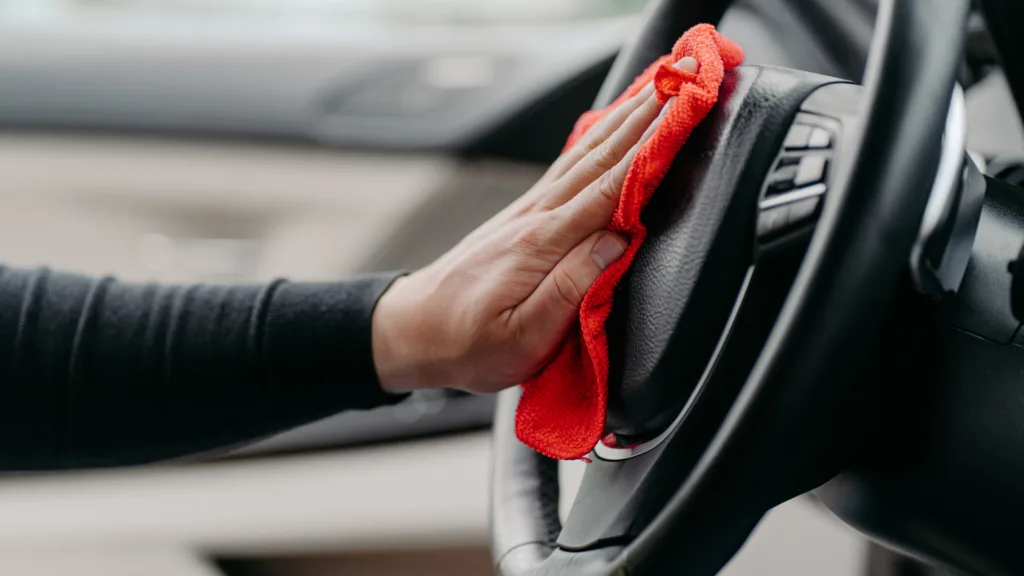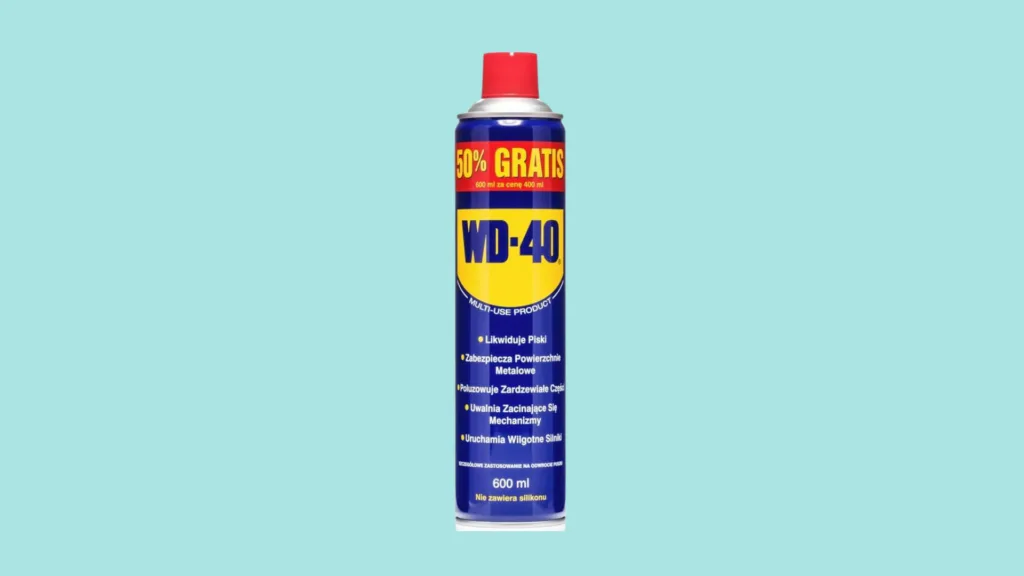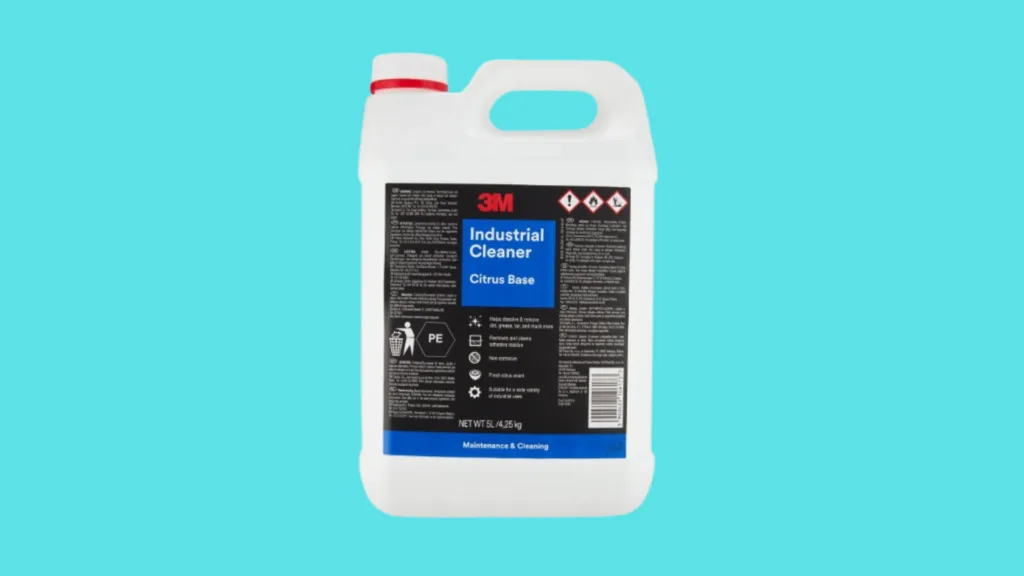
Adhesive residue from an adhesive-back sticker or label or tape can be a real trouble to deal with. Whether it’s from peeling all of a price tag off a new purchase or removing tape residue from a project, that icky sticky residue or glue left behind can create a mess. Sometimes, it takes to get off all that goo and restore your surface to its original state, though. Don’t worry, there are a few simple ways you can use to remove adhesive residue without any sort of difficulty. In this article, we’ll walk you through seven easy methods to class it up and remove all of that stubborn adhesive. From everyday items you have at home to specialised products, you’ll find practical solutions for how to remove sticky residue effectively. Let’s dive into these tried-and-true techniques that work throughout the home on metal, wood, plastic, and even glass surfaces.
7 Easy Ways to Remove Adhesive Residue
Plastic Scraper
Using a plastic scraper is a straightforward way to remove adhesive residue from hard surfaces like metal, wood, plastic, or even wood flooring. After peeling all of an adhesive-back sticker or label, this method tackles the sticky adhesive label residue left behind. I did some research and found this among the methods that seemed to come up often due to its simplicity and effectiveness.
- Total Time: 5–10 minutes
- Ratings: 4/5
How To Use
Gently scrape the spot with a putty knife though make it a plastic one, not a metal blade. You don’t want to risk scratching the surface. Apply light pressure to lift the residue without damaging what’s underneath. You can find plastic scrapers at hardware stores, and they’re great because they’re chemical-free and safe around kids or pets. This method works well to get sticker residue off plastic, metal, or wood, though stubborn spots might need a second pass.
WD-40

Lubricant spray WD-40 is a household name for good reason—it’s fantastic for how to remove adhesive residue. This versatile product can dissolve and remove dirt, grease, tar, and many non-curing type adhesives, making it perfect for sticky adhesive label residue or tape adhesive remover tasks. It’s a go-to when you need to class it up on most plastic, wood, and glass surfaces.
- Total Time: 10-15 minutes
- Ratings: 4.5/5
How To Use
Spray WD-40 directly onto the adhesive residue and let it sit for several minutes—about 5-10 should do. This gives it time to break down the adhesive. Then, wipe it away with a clean cloth. For tougher residue, repeat as needed. Down the road, wash the surface with soap and water to clear any oily leftover from the spray. Use it in a well-ventilated area and test on a small spot first. Although it’s safe for metal, plastic, and glass, some painted surfaces might not handle it well. It’s fast and reliable for removing that goo competently.
Distilled White Vinegar
Distilled white vinegar is a kind of natural option for how to remove sticky residue without harsh chemicals. Its acidity helps break down adhesive, making it a solid choice throughout the home for glass surfaces, metal, or plastic. If you’re dealing with residue from old masking tape or something similar, this method is worth a try.
- Total Time: 10-15 minutes
- Ratings: 4/5
How To Use
Soak a cloth or paper towel in distilled white vinegar and press it onto the adhesive residue. Let it sit for several minutes—10-15 works best—to loosen the sticky adhesive label residue. Then, rub it off with the cloth. For extra stubborn bits, scrape the adhesive gently with a plastic scraper without scratching the surface. Test it on a small area first, though it’s generally safe for most surfaces. The vinegar smell might be strong, but it’s non-toxic and eco-friendly—an excellent pick for you if you prefer green cleaning solutions.
Warm Soapy Water
Warm soapy water is another pretty much simple yet effective method to remove adhesive residue, especially from glass surfaces and plastic. It’s a gentle approach that’s safe and works well for lighter sticky adhesive label residue or residue from peeling all of a label or tape. Plus, it’s easy to do with items you already have.
- Total Time: 15-20 minutes
- Ratings: 3.5/5
How To Use
Fill a basin or sink with warm soapy water—dish soap works pretty fine. If the item can be submerged, like a jar or tool, immerse the item in the water for 15-20 minutes. This softens the adhesive, making it easier to scrape the adhesive or wipe it away with a cloth. If the surface can’t be soaked, wet a cloth with the soapy water and lay it over the residue for the same time. Afterward, rub or scrape gently with a plastic scraper without scratching the surface. It might take a bit longer than other methods, but it’s chemical-free and safe for you and the environment.
Baking Soda Paste
Baking soda is another natural powerhouse you could use if you’re constantly scrolling to get an idea that actually works over sticky adhesive residue. It’s abrasive enough to tackle icky sticky residue or glue left behind but gentle enough not to damage most surfaces. This method is great for metal, wood, or plastic, and it’s a favorite for those who prefer DIY solutions.
- Total Time: 10-15 minutes
- Ratings: 4/5
How To Use
Mix baking soda with a bit of water to form a thick paste. Apply it directly to the adhesive residue and let it sit for several minutes—about 10-15. This gives it time to break down the adhesive. Then, scrub it off with a cloth or sponge. For tougher spots, use a plastic scraper to gently scrape the spot with a putty knife (plastic, not metal blade). Rinse with water afterward. It’s safe, non-toxic, and eco-friendly—an excellent choice for you if you’re avoiding chemicals. Just test it on a small area first, as it might be too abrasive for delicate surfaces.
Rubbing Alcohol
The second last item on our list is rubbing alcohol. It’s a common household item and can be found in most pharmacies or grocery stores. It evaporates very fast, so it’s less messy than other liquids, and it’s great for sticky adhesive label residue or tape residue. If you’re dealing with a mess from old masking tape or something parallel, this method can save your day.
- Total Time: 5-10 minutes
- Ratings: 4.5/5
How To Use
Wet a paper towel or clean cloth with rubbing alcohol and apply it to the residue. Rub the residue to lift it off—it should start dissolving almost immediately. For thicker residue, let the alcohol-soaked cloth sit on it for a few minutes before rubbing. It’s fast and leaves no oily film behind. Just make sure to use it in a well-ventilated area and test on painted surfaces first, as it can sometimes strip paint. It’s a reliable pick for you when you need a quick fix without the trouble
3M™ Industrial Cleaner and Adhesive Remover

For those tough jobs where other methods fall short, 3M™ Industrial Cleaner and Adhesive Remover is a professional-grade solution. It’s designed to dissolve and remove dirt, grease, tar, and many non-curing type adhesives. If you’re looking for a solid choice, this one’s a great pick from adhesive supplier UK products! It’s a bit pricier, but it’s worth it for you if you need to tackle serious residue.
- Total Time: 10-15 minutes
- Ratings out of 5: 5
How To Use
Spray the cleaner directly onto the adhesive residue and let it sit for several minutes—follow the label for exact timing. Then, wipe it away with a clean cloth. It’s powerful enough to handle industrial adhesives but non-corrosive, so it’s safe for most surfaces without damaging the surface underneath. It’s also citrus-based, so it smells better than many solvents. Use it in a well-ventilated area and wear gloves if you have sensitive skin.
Wrapping Up…
Whether you’re dealing with sticky adhesive label residue on a treasured piece of furniture or goo off a glass jar, these methods offer practical solutions throughout the home. From pantry staples like baking soda and vinegar to specialised tape residue removers like 3M™, there’s an option for every surface and severity. Make sure to test any sort of method you’re going to use over a small area first, especially on delicate materials. With patience and the right technique, you can remove all of that mess and class it up in no time.
